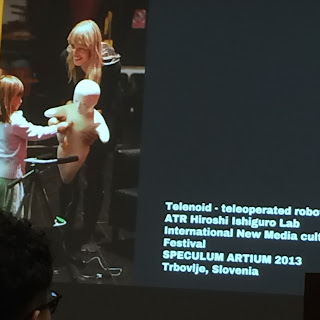In this lecture, I learned that space is a very interesting topic when it comes to science and art coming together because it influenced a lot of revolutionary ideas and discoveries. I've seen videos about how the camera spans out from a human being and into outer space, but seeing it in the Powers of Ten video, it made it clearer to how exact or estimated it gets when it comes to measuring where everything is and how we deep to look into it. You could see it from every 10 millimeters and you could see everything from the city, state, earth, stars, space, etc. and goes all the way out to the milky way and goes right back exploring molecular cells inside the body relating to nanotechnology that we discussed last week. In the lecture video, Space part 1, there is an explanation how the telescope revolutionized how we saw outer space and the ideas and discoveries that came from it, it is truly amazing and unimaginable to be see that couldn't be seen with the naked eye. It is a tool that is able to help the human being explore the universe and influenced more advanced tools to better explore the universe.
In the other lecture videos, the topics of air crafts being sent to space with living beings inside or humans was explained and this fascinates me because to live in a world where long ago going into space seemed impossible has been made into a reality, and to live somewhere that explores beyond the human race and earth is amazing because we a curious species. Sputnik won the space race that was the world's first satellite to go to space by the USSR, and Laika(dog) was the first living being to be sent into space. All these things are amazing to be because apart from sending air crafts into space, humans were able to create spaceships, etc. to help the human or living being survive in it while in space which blows my mind. All this influenced ideas from people to further explore space such as capsules being sent into space, the Leonardo space art project where individuals work together to further investigate space activities, the Arctic Perspective Initiative where development of knowledge in technology towards regions in Arctic regions.
Sources:
"ARCTIC PERSPECTIVE INITIATIVE." ARCTIC PERSPECTIVE INITIATIVE. N.p., n.d. Web. 25 May 2016.
"An Eames Office Website." Powers of Ten Blog. N.p., n.d. Web. 25 May 2016.
"CODED UTOPIA." Continental Drift. N.p., 27 Mar. 2007. Web. 25 May 2016.
"Leonardo Space Art Project Visioneers." Leonardo Space Art Project Visioneers. N.p., n.d. Web. 25 May 2016.
Vesna , Victoria, dir. Space Part 1. 2012. Film. 30 Nov 2012. <
Vesna , Victoria, dir. Space Part 2. 2012. Film. 30 Nov 2012. <
Vesna , Victoria, dir. Space Part 3. 2012. Film. 30 Nov 2012. <
Vesna , Victoria, dir. Space Part 5. 2012. Film. 30 Nov 2012. <



























 This week, I learned that medicine is a huge part in the art world when it comes to the technology within medicine that is mostly known to be in hospitals. Professor Vesna explains in the lecture videos how there are medical technologies used for human dissection(goes back to the ancient Greeks, and ancient Egyptians) and in order to know where to cut they use modern day technologies such as X-Rays, MRIs, Cat Scans, etc. to figure out what is wrong with the patient in order to know what to do. Also explained in
This week, I learned that medicine is a huge part in the art world when it comes to the technology within medicine that is mostly known to be in hospitals. Professor Vesna explains in the lecture videos how there are medical technologies used for human dissection(goes back to the ancient Greeks, and ancient Egyptians) and in order to know where to cut they use modern day technologies such as X-Rays, MRIs, Cat Scans, etc. to figure out what is wrong with the patient in order to know what to do. Also explained in 









